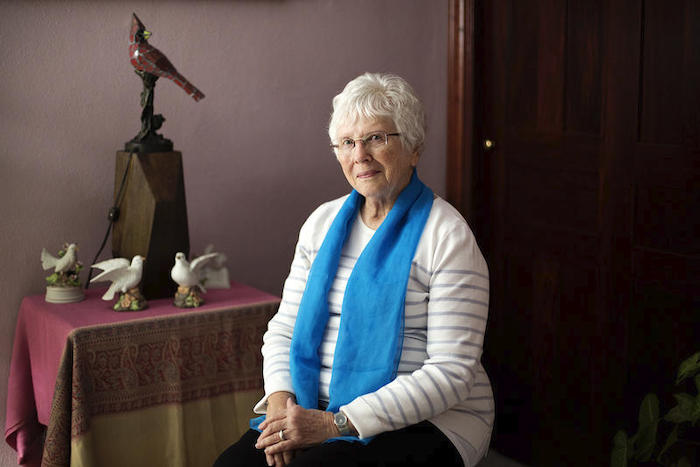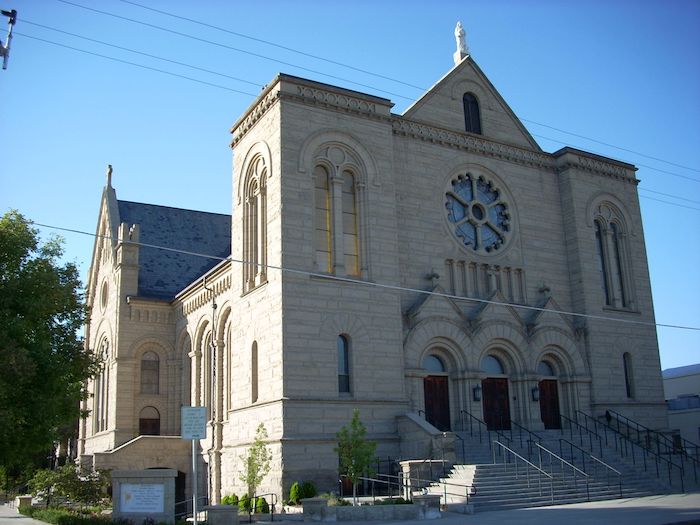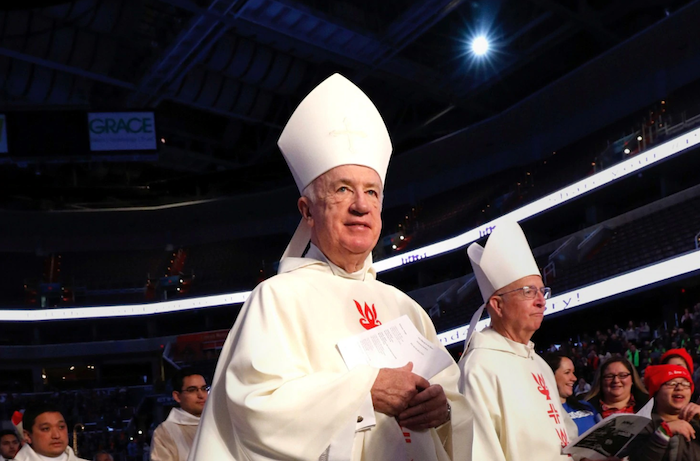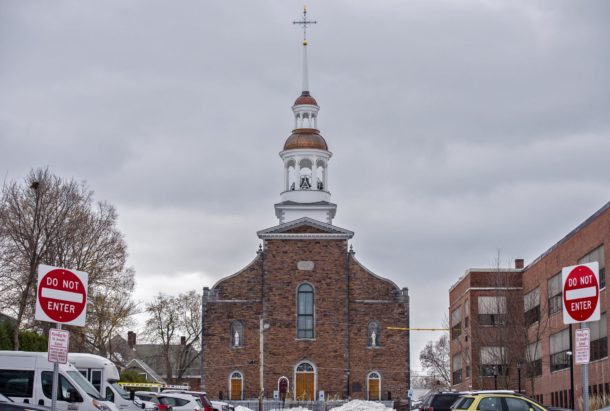
By
When Vermont’s Catholic Church recently came clean about its half-century-long history of child sex abuse claims against 10% of its clergy, many wondered how much money the state’s largest religious denomination had on hand to deal with a potential new wave of lawsuits.
The statewide Diocese of Burlington’s latest public financial statement lists $16 million in unrestricted net assets.
But that figure doesn’t include an estimated $500 million in property that church leaders stashed into trusts more than a decade ago to protect those assets from priest abuse settlements.
In the spring of 2006, then-Bishop Salvatore Matano began to see how much the scandal, first exposed by the Boston Globe, would cost the church.
The Vermont diocese had paid one accuser $20,000 to drop his court case in 2003. A year later, two more men demanded $120,000 and $150,000 respectively before they agreed to settle. In 2006, the church, facing a six-figure debt and a seemingly endless series of civil lawsuits, saw individual settlement claims rise to nearly $1 million.
That’s when Matano hatched an idea. The bishop told his attorney to place each of the diocese’s local parishes — some 130 at the time — into separate trusts whose holdings could only be tapped for “pious, charitable or educational purposes,” shielding the property from potential multimillion-dollar jury verdicts.
“In such litigious times, it would be a gross act of mismanagement if I did not do everything possible to protect our parishes and the interests of the faithful from unbridled, unjust and terribly unreasonable assault,” Matano wrote in a private letter to concerned Catholics.
Soon after, the diocese’s lawyer quietly sent a stack of two-page “deed into trust” form letters to municipal clerks throughout the state.
Although news reports revealed the diocese’s initial idea for shielding assets 13 years ago, details about how the church carried out the plan, what it stockpiled and where everything would lead haven’t been reported until now. As renewed scrutiny of priest misconduct raises new questions about the diocese’s capacity for future payouts, the trusts could soon be tested.
‘The information we have is sufficiently compelling’
Ever since 17th century Catholic explorer Samuel de Champlain inspired the name of the Green Mountain State — “Voilà les monts verts!” he reportedly exclaimed four centuries ago — the church has played a prominent role in Vermont history, boasting as many as 157,000 members as late as 1980.
But its reputation was besmirched when former residents of Burlington’s now-closed St. Joseph’s Catholic orphanage spoke publicly in the 1990s about enduring physical and psychological abuse during the facility’s operation from 1854 to 1974.
The diocese offered each orphanage resident $5,000 to drop their right to sue. As many as 160 considered the deal and more than 100 accepted payment, according to news reports from the time.
When the press reported on a statewide priest misconduct scandal in the early 2000s, church leaders used a similar strategy to keep survivors from talking.
The idea initially worked. In the fall of 2003, the diocese settled the first lawsuit for a small unspecified sum.
“I’m not going to tell you the amount, although it’s relatively low,” the accuser’s lawyer said at the time of a figure reported to be $20,000. “It was never about the money, it was getting the church to recognize what they did was wrong. We don’t think this is the end of the story. We think there are other victims out there.”
Other survivors weren’t as easily satisfied. A year later, the diocese settled two more cases for $120,000 and $150,000. The church also revealed it had spent more than $700,000 to squash earlier lawsuits dating back to 1950 and another $2 million for orphanage-related compensation, counseling and legal fees.
The diocese doesn’t have insurance for abuse cases and therefore must pay for settlements with assets on hand. (Church leaders stress they don’t tap regular collection money or the diocesan Bishop’s Fund for settlements.)
By 2005, more than a dozen people had filed lawsuits seeking liens on church property totaling up to $30 million.
“We believe the information we have is sufficiently compelling that seven-figure verdicts are quite likely,” their lawyer, Jerome O’Neill of Burlington, said at the time about the possibility of jury trials. “We want to make sure that there are sufficient assets available if we are successful in our actions.”

‘This was much more than we wanted to pay’
Soon after, O’Neill scored big when a judge ordered the Vermont Attorney General’s office to share the priest misconduct files it obtained from the diocese. The lawyer received hundreds of pages of paperwork chronicling the fact the church knew several of its priests had faced accusations of child sex abuse for decades but did nothing to alert the public or police.
By the spring of 2006, O’Neill had 17 new clients and a slate of trials set to start the day after Easter. What the public didn’t know: the first of those cases centered on claims against the former Rev. Edward Paquette, who secret files showed to be the worst serial predator of all the state’s clergy.
A court order restricted anyone involved from talking publicly. But privately, O’Neill and church leaders understood the value of the papers the lawyer held in his hands. If they were introduced in court, a shocked jury might award a survivor a multimillion-dollar verdict.
The church seemed ready to reject escalating settlement demands as Burlington’s Chittenden Superior Court screened jurors for the first Paquette trial in April 2006. Then the judge, gaveling in proceedings, announced the parties had forged a last-minute agreement for a record $965,000.
“This was much more than we wanted to pay,” the diocese’s lawyer said outside court. “But we decided that it would be the best to minimize the cost.”
Church leaders had hoped the settlement would keep the accuser from talking publicly. But once the court lifted its gag order upon the close of the trial, O’Neill — whose client hadn’t signed a nondisclosure agreement — surprised everyone by revealing all of the evidence.
The documents showed Vermont Catholic leaders knew two other states had dismissed Paquette for child sex abuse before they assigned him to Rutland in 1972, Montpelier in 1974 and Burlington in 1976.
“The dossier is large and the history long,” the bishop of Fort Wayne-South Bend, Indiana, had warned his Green Mountain State colleagues in a letter about the priest’s record of molesting boys.
For the first time, the public had a glimpse of what the diocese had covered up for decades.
‘Unbridled, unjust and terribly unreasonable assault’
By the first week of May 2006, the church, suddenly in debt more than $1 million and facing a rising number of lawsuits, was studying its financial options. It soon made headlines by announcing it wanted the judge who oversaw the $965,000 settlement to be barred from presiding over the remaining cases.
“The diocese has great concern over the lack of a level playing field,” its lawyer said at the time. “We’re not trying to hide anything. We’re trying to keep prejudice from building.”
Unbeknown to the public, another church attorney was mailing two-page form letters to municipal clerks to secure parish property into individual local trusts.
“This deed into trust shall operate as an assignment of all personal property, tangible and intangible, fixed or moveable, together with all accounts, funds, benefices and entitlements, related to the ownership, operation, management, control, preservation and use of the herein conveyed real estate,” each document says.
As outlined in the papers now on file in town clerk’s offices, the diocese’s bishop is the “trustee” of each trust, each parish pastor is the “trust administrator” and each parish finance council forms the “trust advisors.”
“Thus, the present diocesan protocols and regulations for the administration of parishes remain, in effect, unchanged,” Matano wrote in his private letter to concerned Catholics.
Speaking at a 2006 Mother’s Day reception at the Woodstock Inn, Matano told attendees the trusts were “an extra layer of protection” from anyone seeking to tap church assets.
“I’m really in a no-win situation,” he said. “I want to be sensitive to victims, but I don’t want to inflict pain on innocent parishioners. It’s certainly just to ask the church to be accountable, but is it just to destroy parishes, schools and other agencies of care to do so?”
Learning about Matano’s statement about protecting the church from “unbridled, unjust and terribly unreasonable assault,” the national Survivors Network of those Abused by Priest blasted the bishop for “attacking deeply wounded men and women who were raped as kids by priests.”
“How can you lash out at them and call their long overdue, David vs. Goliath effort an ‘unbridled, unjust and terribly unreasonable assault?’” survivors wrote in a letter to Matano.
‘It has a very serious impact on a small, rural diocese’
O’Neill responded more strategically. The lawyer, knowing the church doesn’t pay taxes and its properties aren’t listed at fair market value, sought assessments of the holdings’ true financial worth.
Former state economist Arthur Woolf reviewed insurance and municipal records to place a “market value” of all Vermont Catholic Church-related property at between $270 million and $500 million.
An insurance company, for its part, estimated the replacement cost of all parish, school and support buildings at $400 million, noting the number didn’t put a price tag on the underlying land.
Matano, who steadfastly confined his media comments to diocesan-run press outlets, defended the trust idea in a rare 2006 interview. Noting “this is not in any way intended to penalize victims,” the bishop said the plan was designed to reassure Vermont churchgoers who feared the potential loss of their parish holdings.
“They had no part in these awful events of the past,” he said. “I think it’s unfair to penalize them and say they are responsible.”
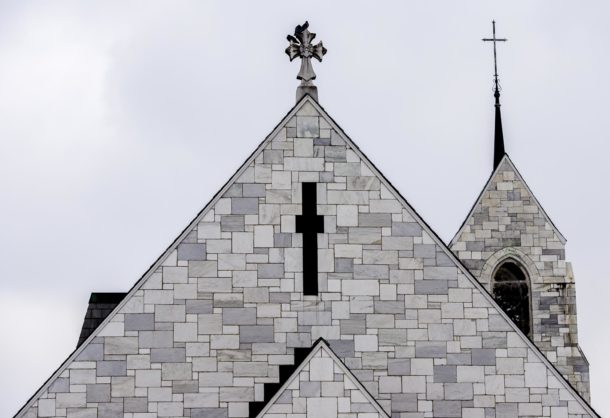
Matano wasn’t the only Catholic official aiming to shield assets. U.S. Cardinal Timothy Dolan, for example, was head of the Archdiocese of Milwaukee, Wisconsin, in 2007 when he worked to move nearly $57 million in church holdings into a cemetery trust to protect them “from any legal claim and liability,” he wrote in a letter to the Vatican.
O’Neill believes the act of shifting assets into trusts broke Vermont’s fraudulent deeds law, which bars any transfer “with intent to avoid a right, debt or duty.” He filed state and federal cases in 2009, charging the diocese not only shielded parish property but also $3.8 million into a pension fund and another $3.7 million into a Vermont Catholic Charities account.
“You can’t take property you have, transfer it and then say it’s beyond the reach of your creditors,” the lawyer explains today.
Headlines about the trust plans soon gave way to news of more lawsuits, more settlements and a string of trials. Juries went on to slam the church with a record $8.7 million verdict in May 2008, a nearly $3.6 million verdict in December 2008 and a $2.2 million verdict in October 2009.
“It’s a very, very large amount of money,” Matano told reporters at the time. “It has a very serious impact on a small, rural diocese.”
To ensure the church paid, a judge placed liens not only on the 32-acre Burlington headquarters and the site of the former St. Joseph’s Orphanage but also a portion of its investment portfolio. By the start of 2010, a second judge overseeing more than two dozen additional lawsuits proposed merging the cases into an unprecedented joint trial.
The diocese, fearing bankruptcy, announced it wanted to settle rather than try to defend against the cases.
With most of its assets in the trusts, the church raised $10 million by selling its Old North End offices and campus — the largest open tract of land on the Lake Champlain waterfront in the state’s most populous city — to the alternative liberal arts Burlington College in 2010.
“This will be truly transformative for the college,” the school’s head, Jane O’Meara Sanders, said at the time.
That was not to be. Instead, the financial burden of the purchase led to the closing of Burlington College in 2016 and caught Sanders in a federal investigation as her husband, U.S. Sen. Bernie Sanders, launched his first White House bid. A Justice Department review reportedly concluded last year without charges. But the resulting headlines — “Wife’s Failure to Save College Is Still Looming Over Sanders,” the New York Times reported on its front page this past summer — continue to reverberate through a second campaign cycle.
The former diocese headquarters is now the site of a 700-unit housing and business complex.
‘Who’s controlling the puppet strings?’
The diocese hoped it was finished with lawsuits, only to find itself again under scrutiny when 2018 BuzzFeed published an article titled “We Saw Nuns Kill Children: The Ghosts of St. Joseph’s Catholic Orphanage.” The story led church and law enforcement leaders to launch separate misconduct investigations and the state Legislature to remove a statute of limitation restriction for survivors to file civil cases.
O’Neill has five new lawsuits pending.
“We’ll see if we can resolve them,” he says today. “If not, we go forward with litigation.”
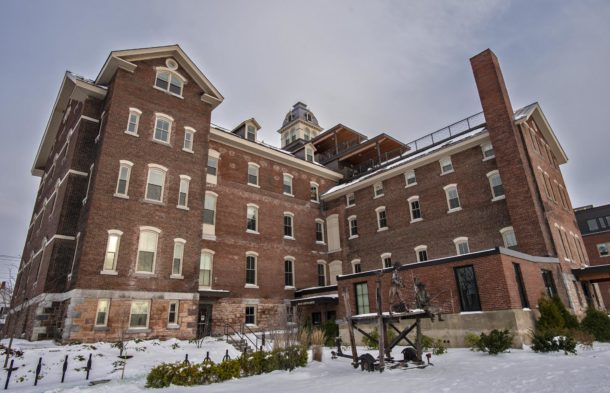
Matano’s successor, Vermont Catholic Bishop Christopher Coyne, isn’t looking for a fight. Calling for the church to be “fully honest about these sins of our past,” Coyne has released accusers from past nondisclosure agreements and worked with a local and state task force of police and prosecutors now investigating the history of church-wide misconduct.
“I think Bishop Coyne is trying to deal with the legacy problem of abuse,” O’Neill says. “I perceive him as someone who wants to be fair. But whether the amount of money the diocese has is adequate to resolve the cases remains to be seen.”
The diocese didn’t respond to calls for comment other than to report Coyne was away this past week at the U.S. Conference of Catholic Bishops annual general assembly in Baltimore, Maryland. He’s returning home to a church that’s financially stable. But that could change if the latest lawsuits go to trial.
Settling what he thought were the last of the abuse cases long ago, O’Neill dropped his fraudulent deeds fight and allowed the six-year statute of limitations for contesting the issue to pass. But if a future jury awards a big payoff to one of his clients, the lawyer believes a judge could rule the parish trusts to be diocesan assets and therefore available for tapping.
“The fact the bishop is the trustee makes the trusts more vulnerable to attack,” he says. “You’d have to have a judgment before it became a real issue, but if the diocese is unable to pay, we will have no hesitancy to reach for those assets. The church may have transferred them, but who’s controlling the puppet strings?”
Not Matano. He left Vermont in 2013 to become bishop of the larger Diocese of Rochester, N.Y. — which recently became the 20th nationwide to seek bankruptcy protection from creditors impacted by church’s misconduct scandal.
Complete Article ↪HERE↩!

